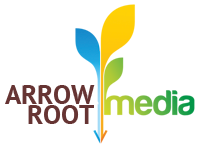This coming Thursday, the Queens Council for the Arts will be hosting a panel for artists. As one of the panelists, I’ve been asked to address the question, “How to effectively get your message out.”
Essentially – you’ve got a website, a social networking profile, or other online identities – now what?
This past May, I gave a presentation on this very issue.
You can see the presentation here.
And I know – the very challenge we all face is “Not enough time, money, or space.” (Hint: This challenge is not unique to artists). And we also have the inevitable question – do we have to do everything like setup a facebook, myspace account, and linkedIn account?
Simply said, if you’re going to actually use these tools to communicate, then of course – use them. They are popular sites because they are useful tools. But if you’re not going to use it, don’t set it up. It’s like having an email account you never check. Why bother?
My question for you then, the reader, revolves around content production :
- TOOLS: How do you envision producing content for the web?
- RESOURCES: What kind of resources do you already have that will enable you to produce this content?
- MESSAGE: What will this content communicate?
- ACTION: What response would you like to elicit from your online audiences?
- PURPOSE: How will this serve your mission and connect to your work offline?
Answering these questions will benefit you much better than answering, what do I do with my MySpace account? If you can answer these questions, you’ll be well on your way to developing your online presence and growing your audience – online and off.
Some Places to start:
1. Start working with a CMS (Content Management System)
If you want to be able to manage and update your website without a web programmer, invest in a content management systems.
I suggest you use one of the following:
- WordPress (typically a blogging platform, but scalable for large sites) – easy, cheap setup
- Drupal (open-source) – higher learning curve, large set of functionality
- Joomla – most popular, though typically more expensive to develop
- Plone – popular with environmental organizations
- posting your photos online (I recommend flickr)
- writing about your process on a blog
- posting a series of videos online
- offering tutorials
- revealing your process as its own art form

